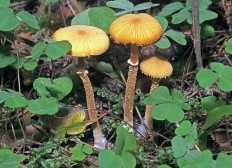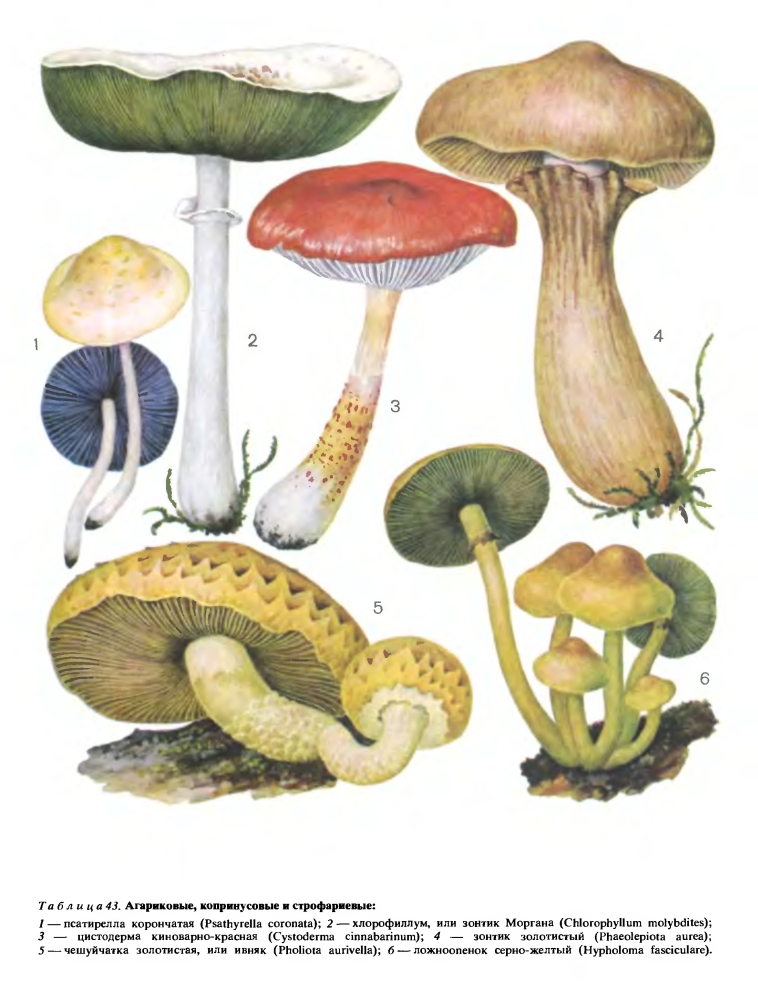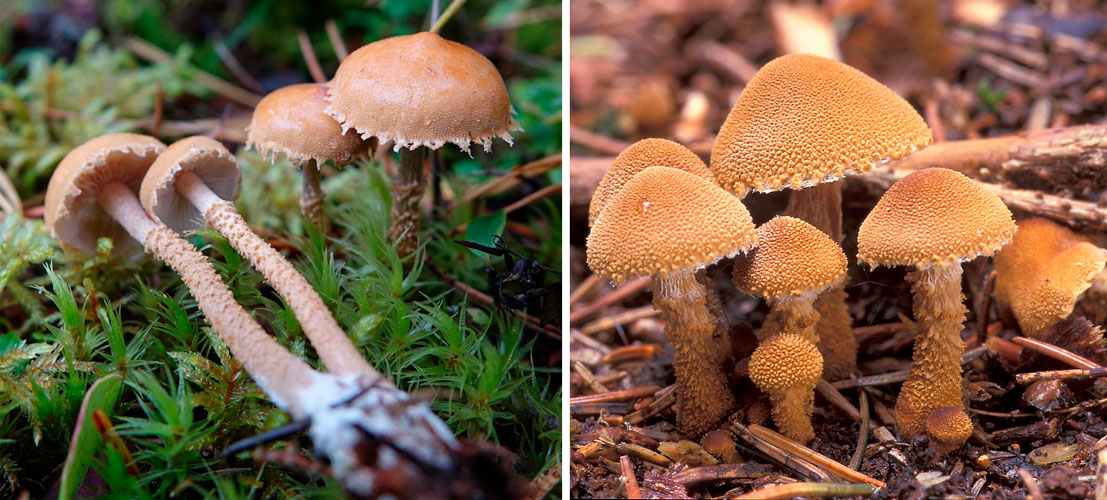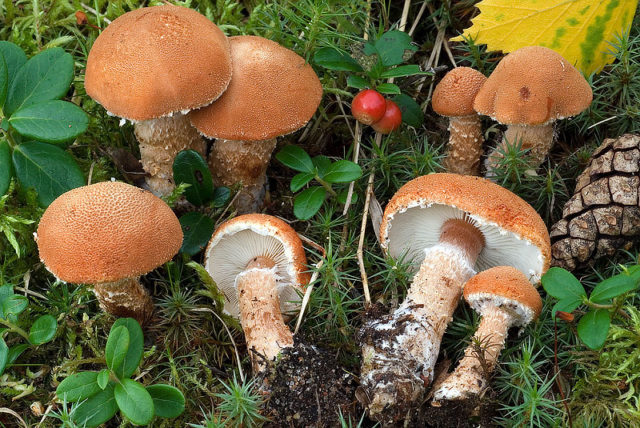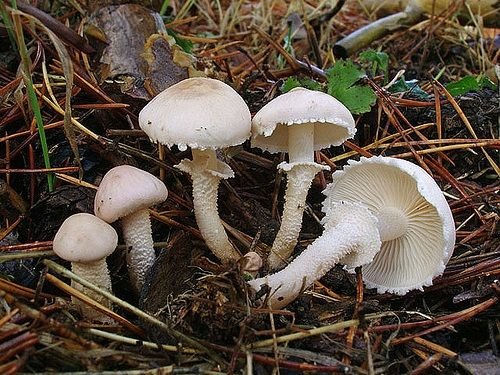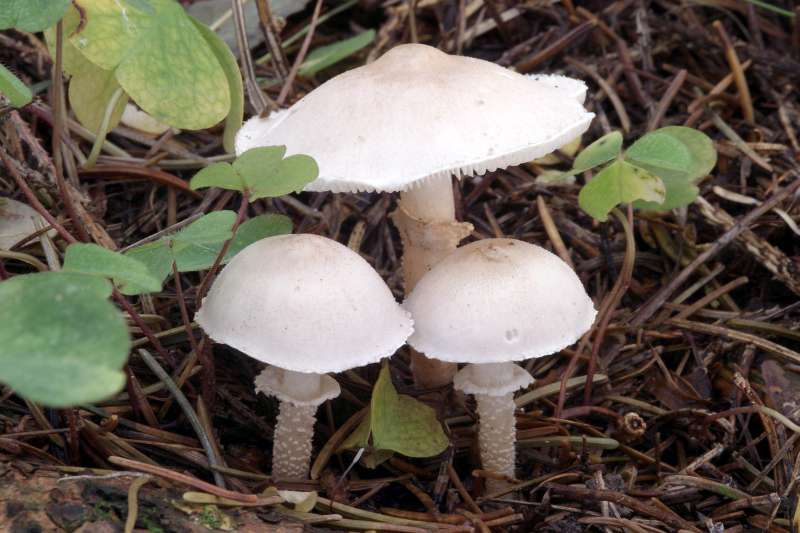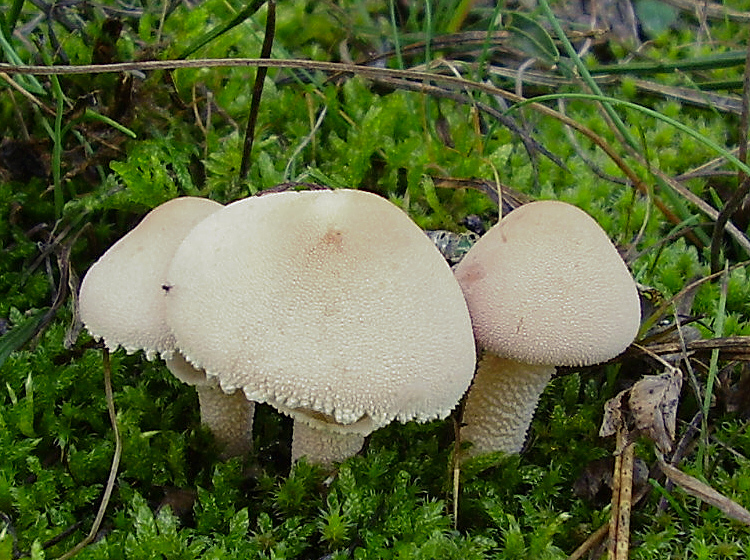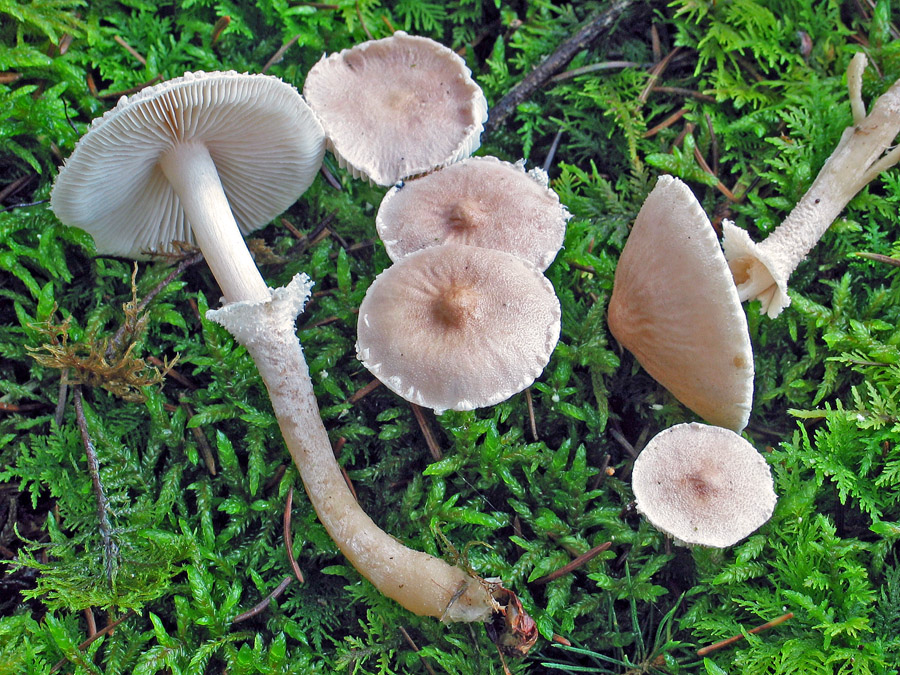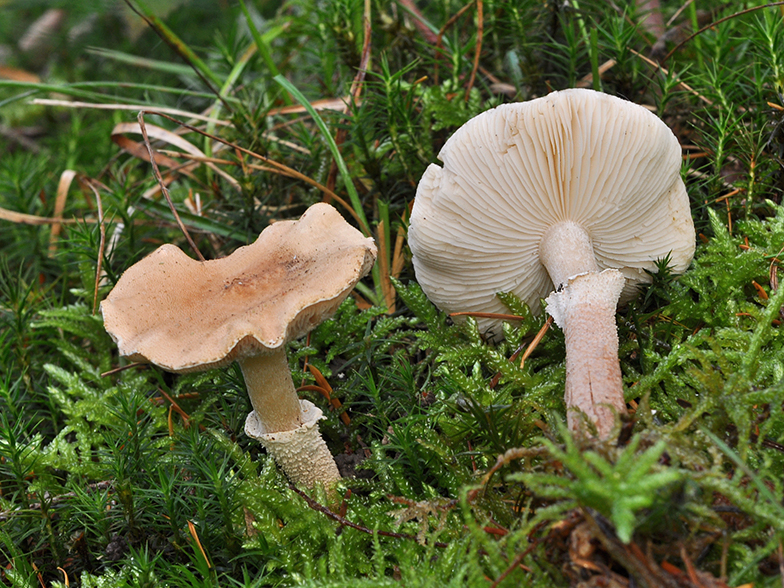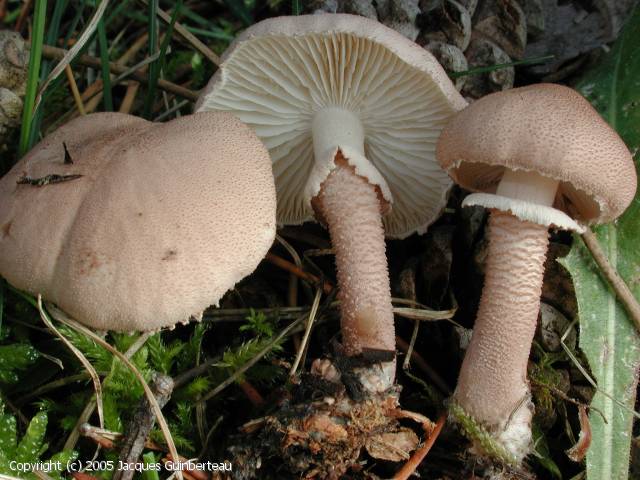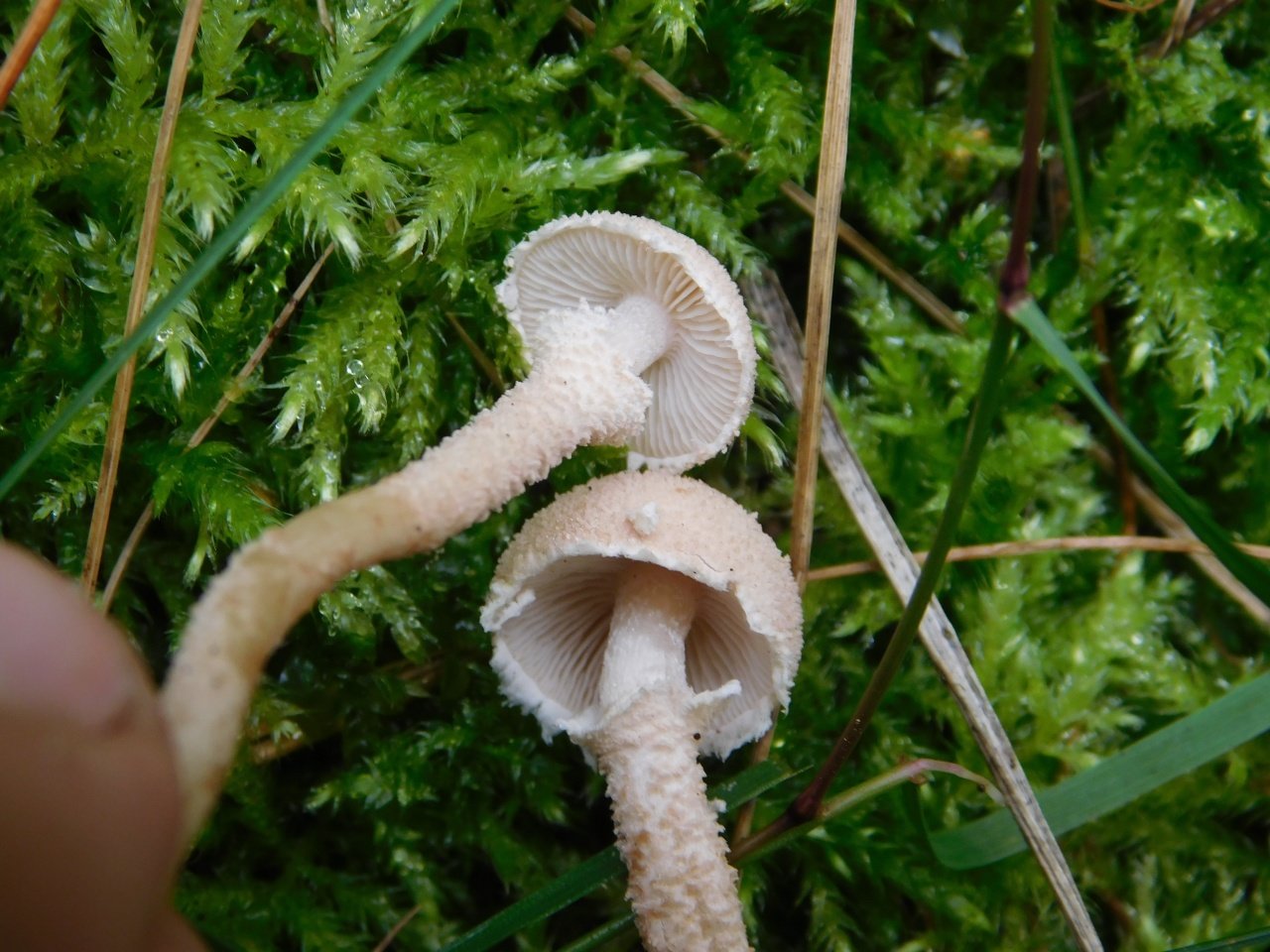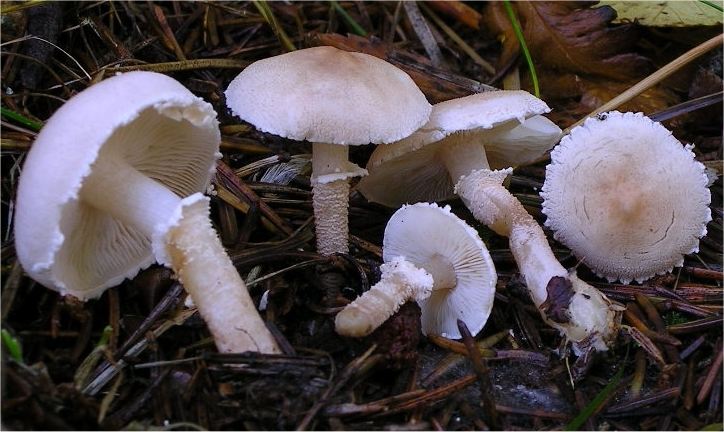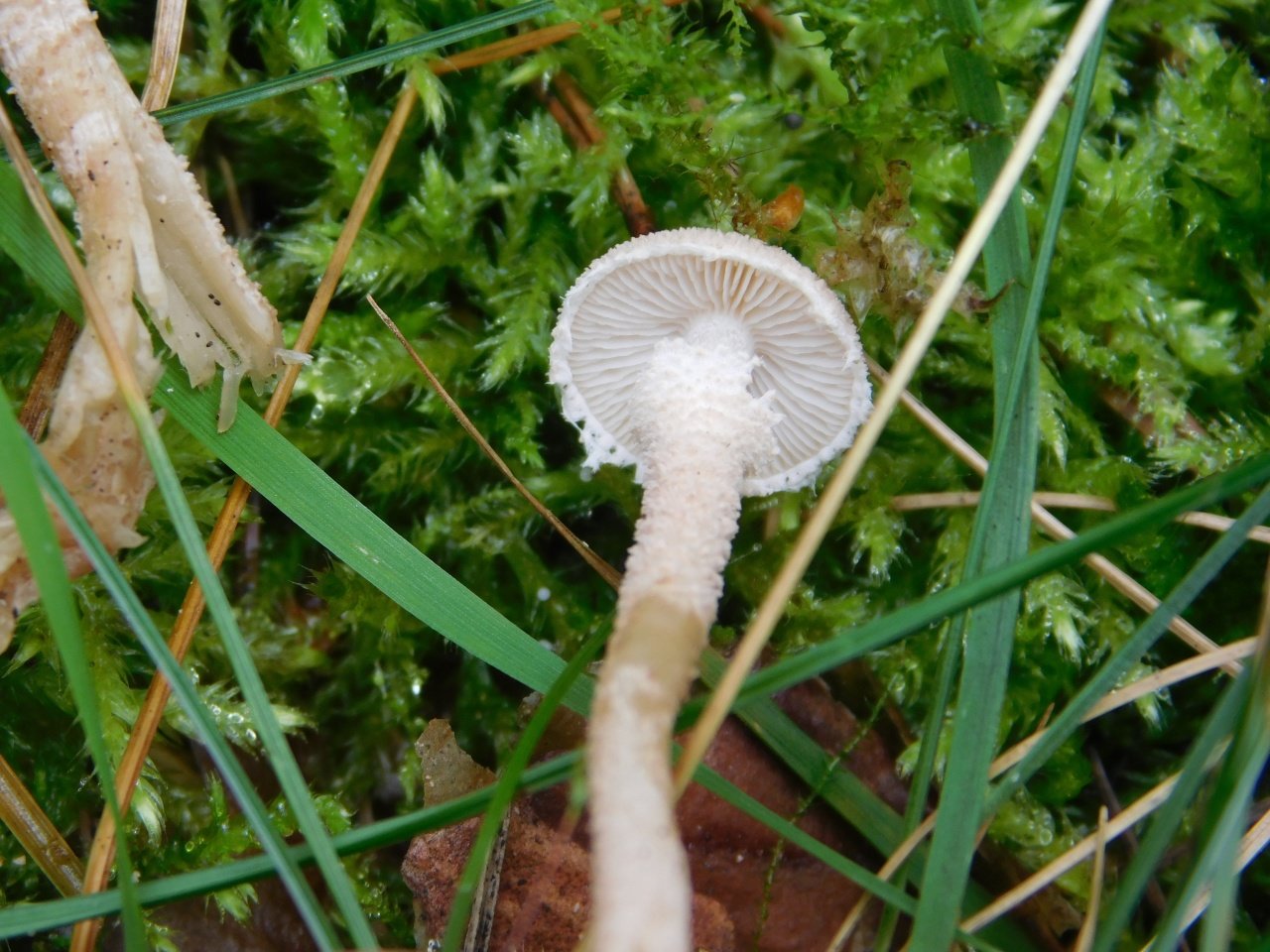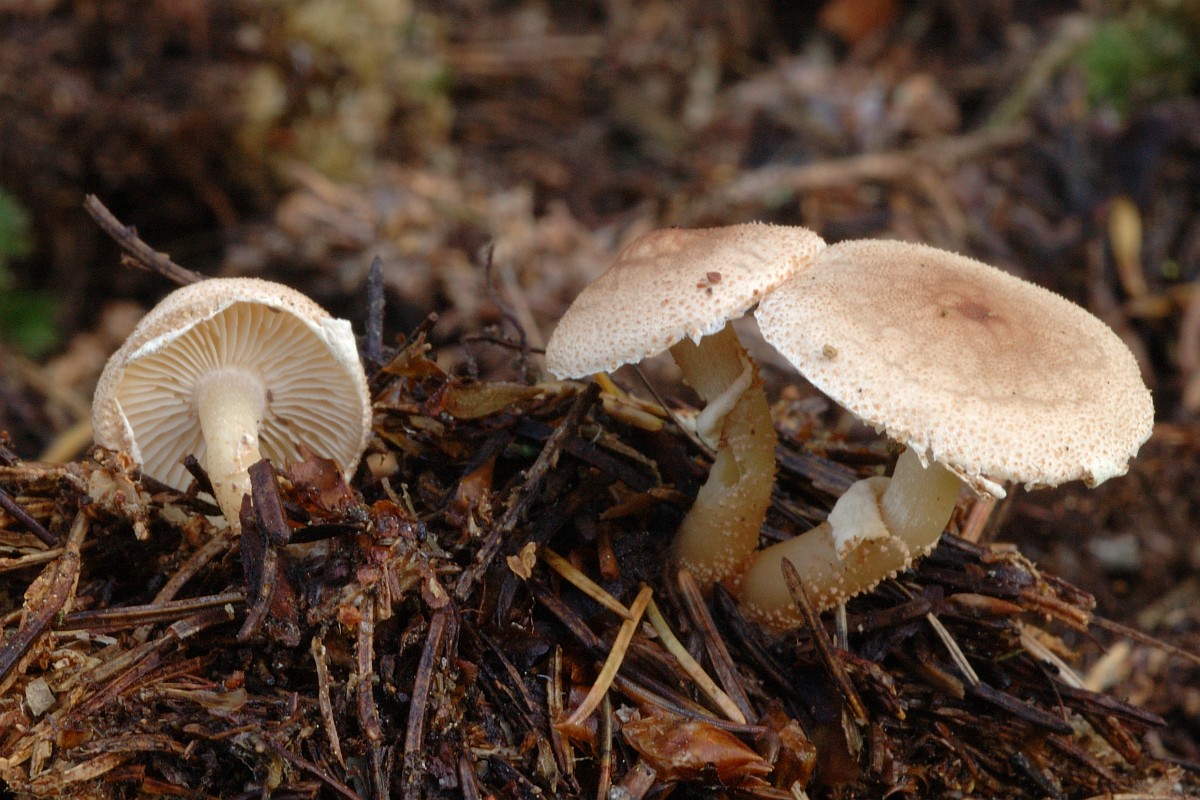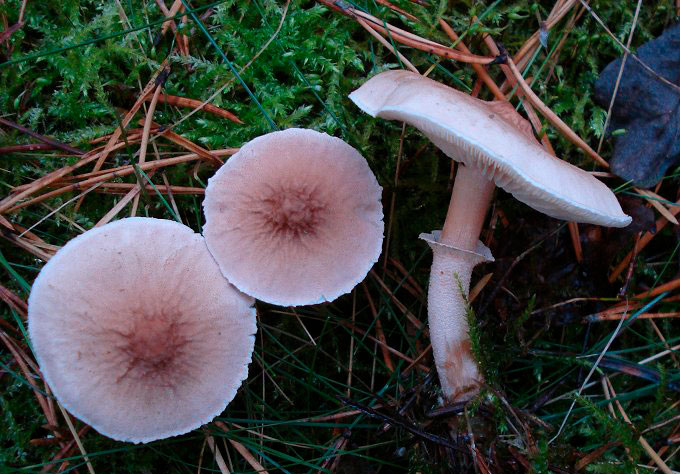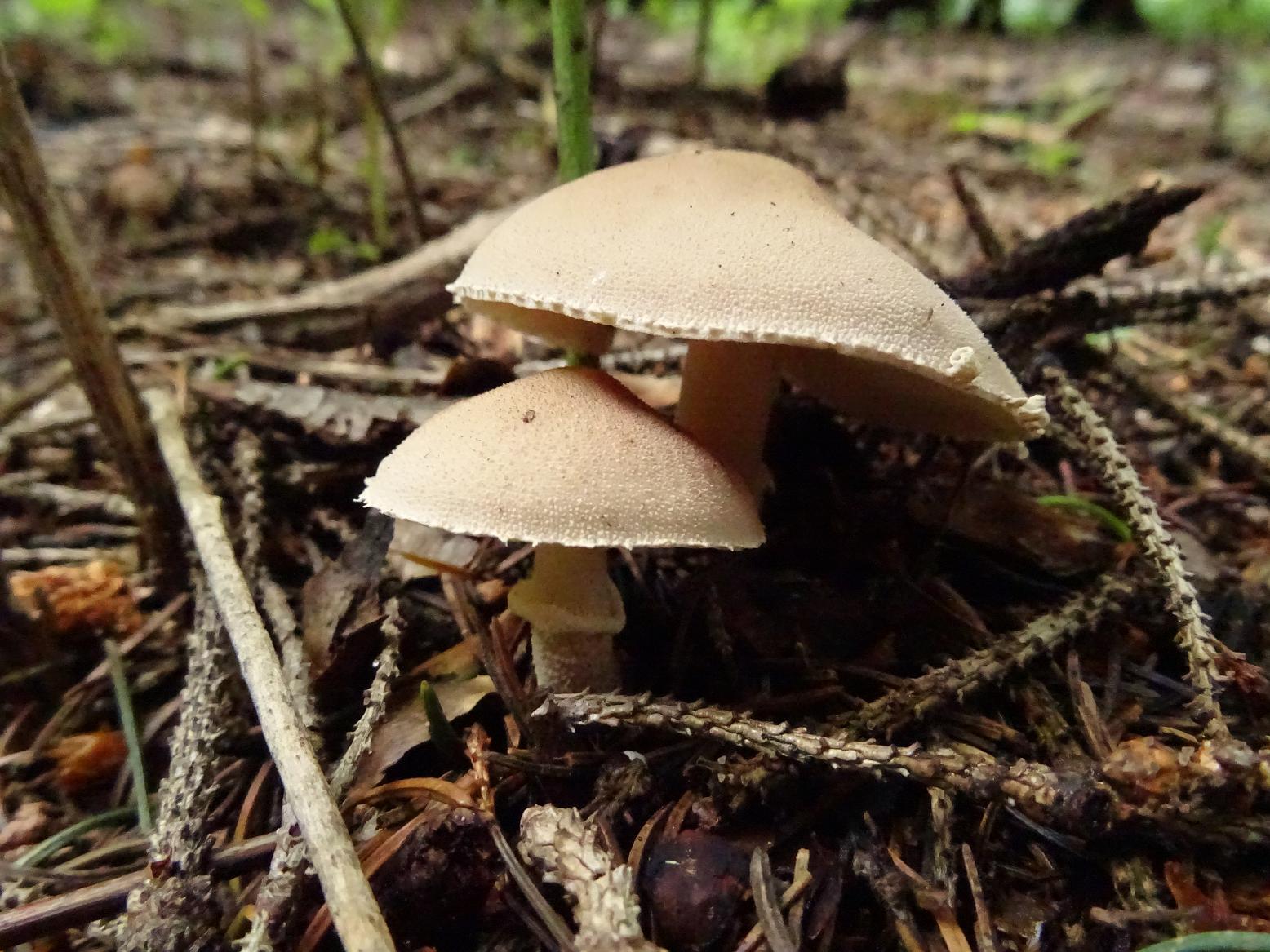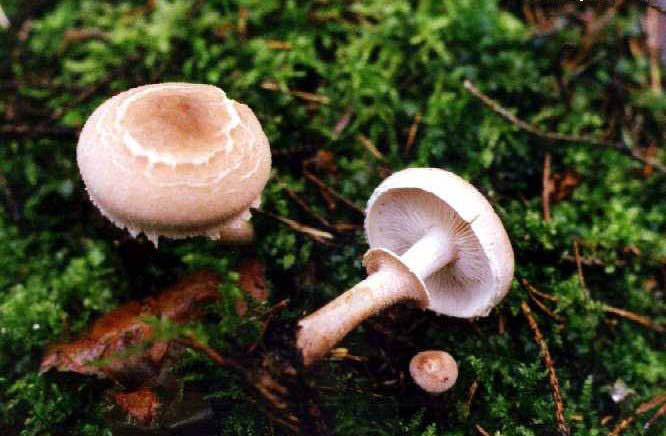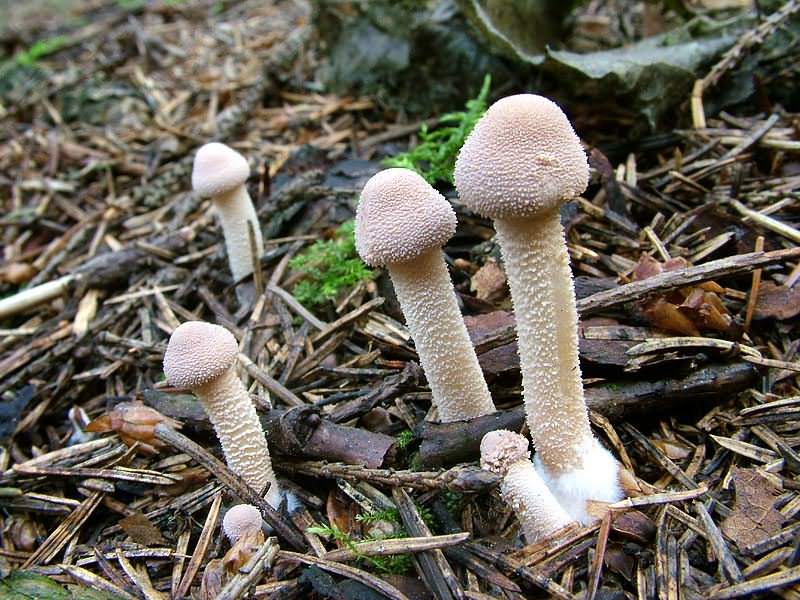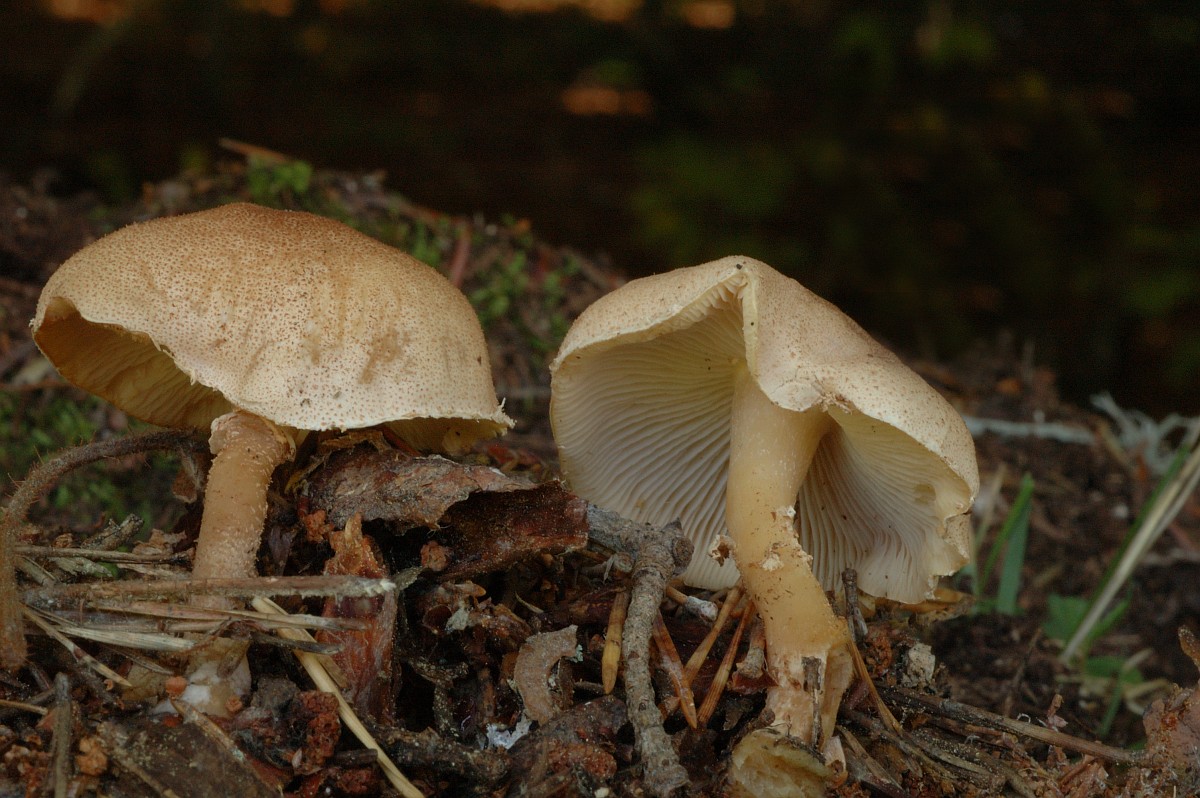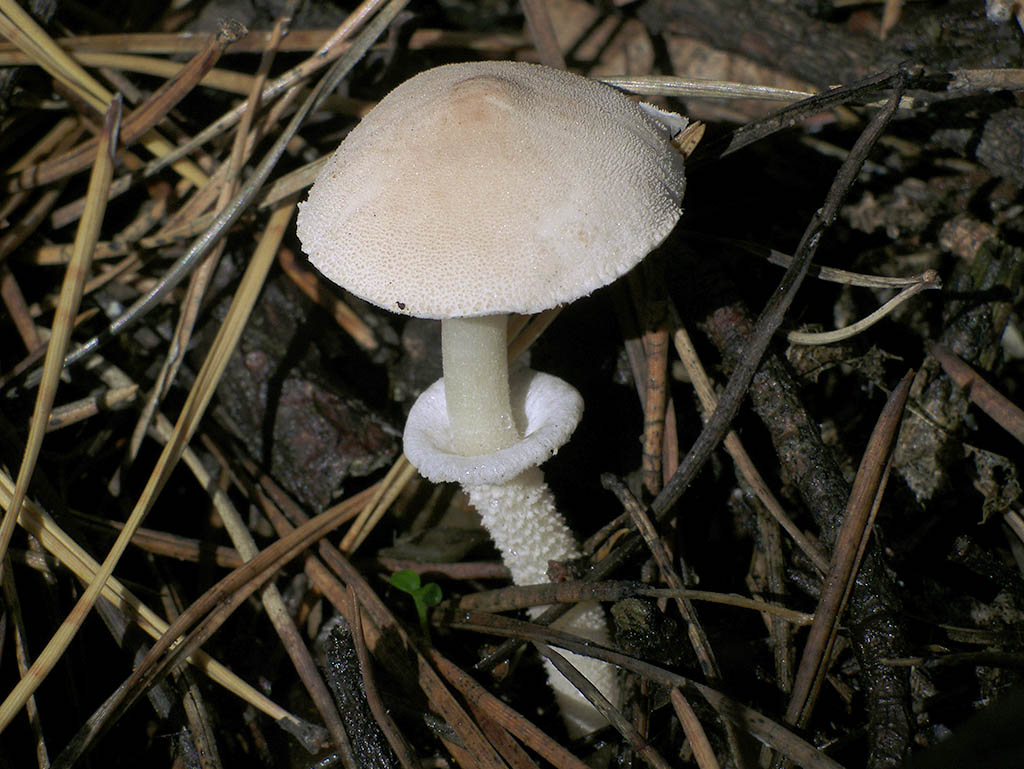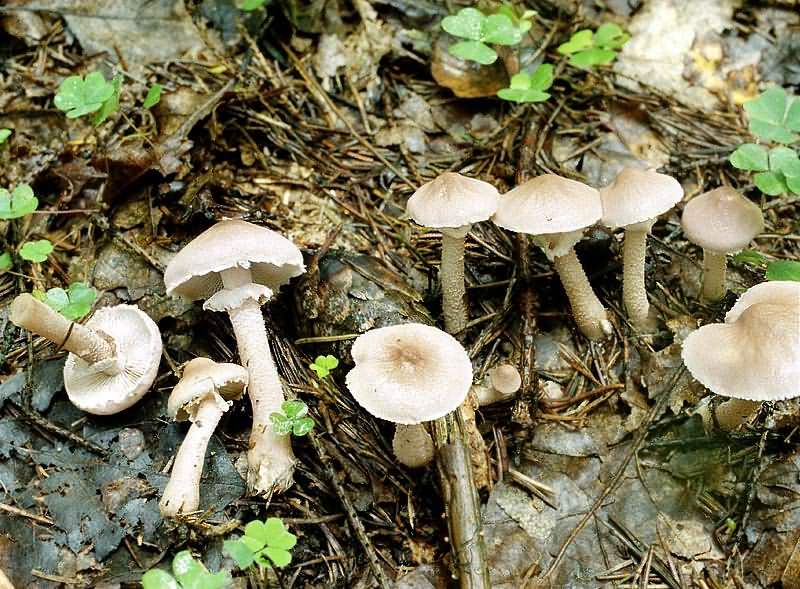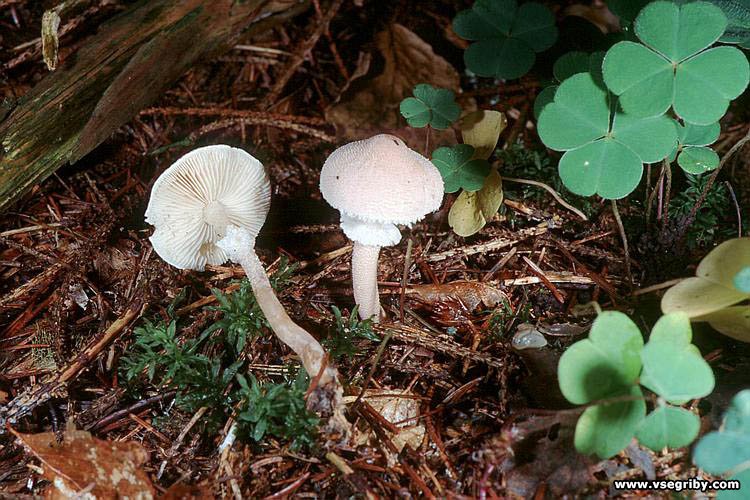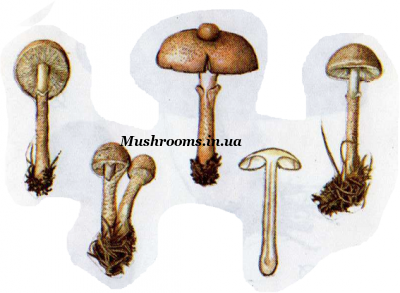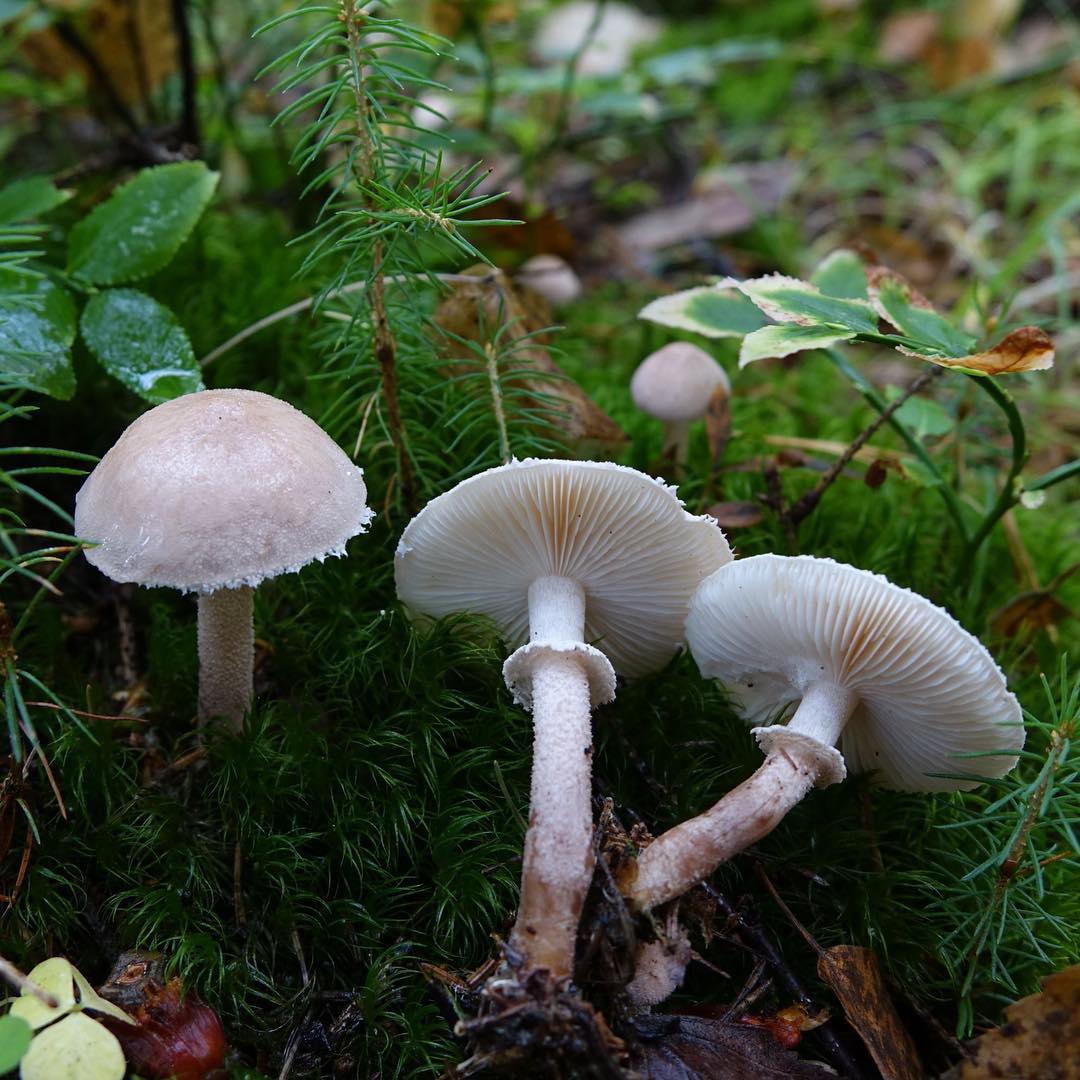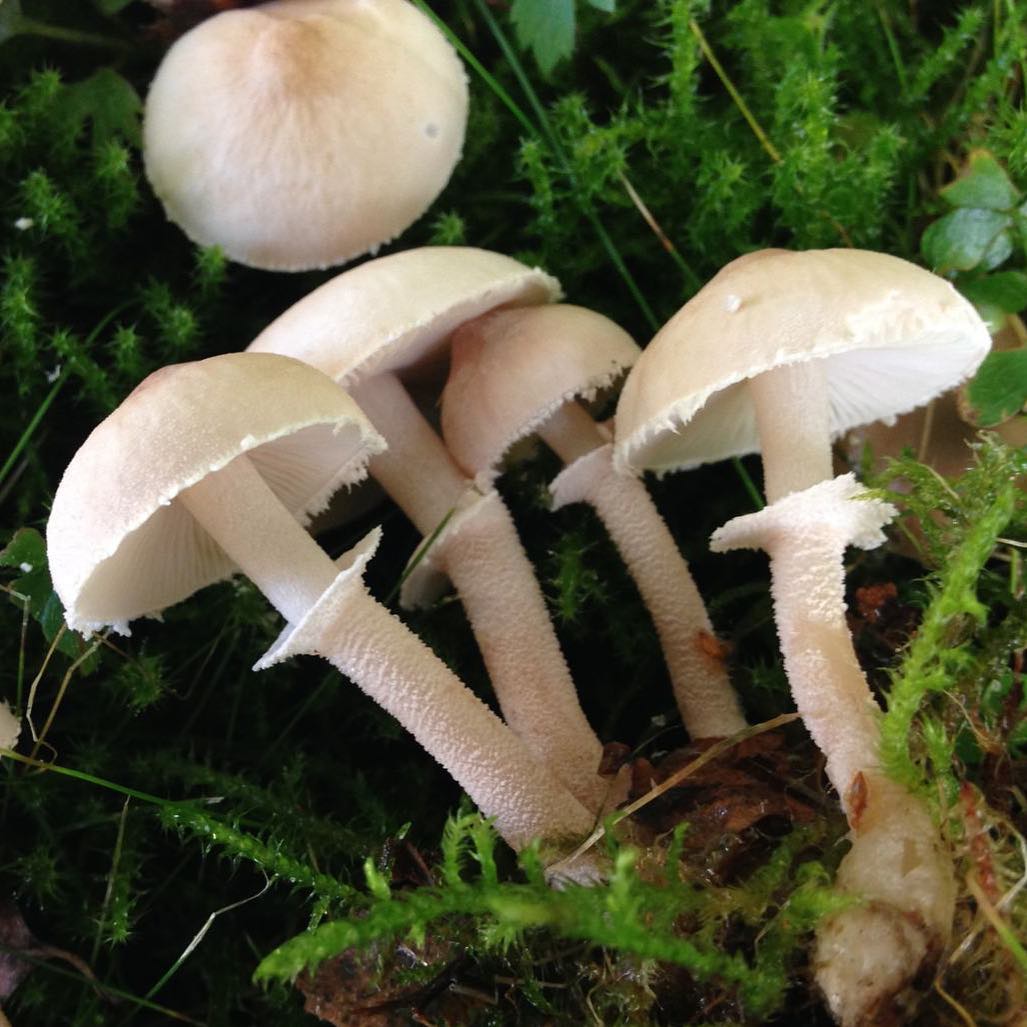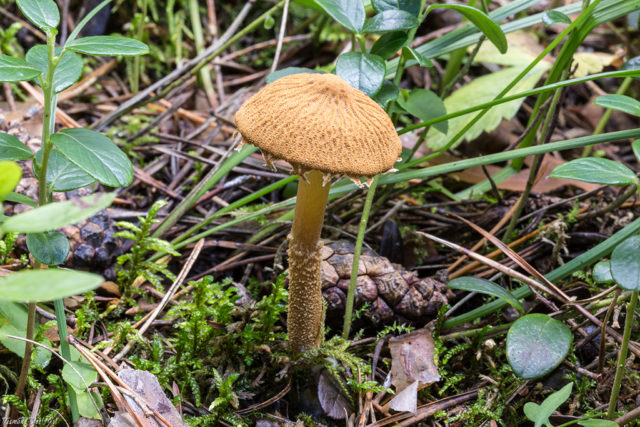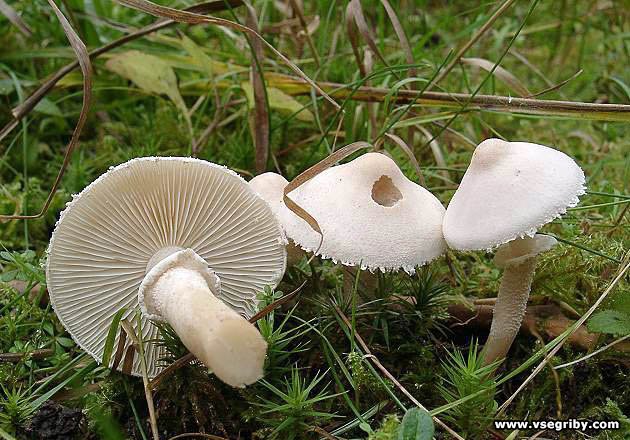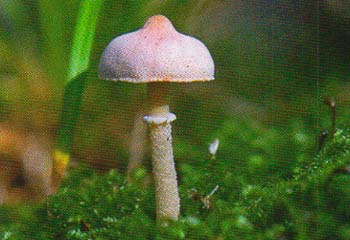Cystoderm
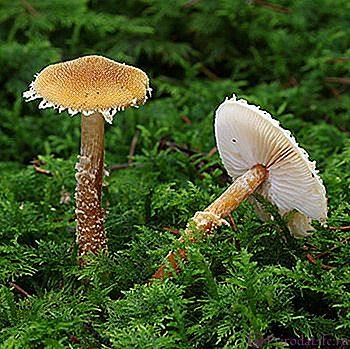
Amianthus cystoderm
Category: conditionally edible.
Hat (diameter 2-7 cm): red, brown or yellowish, with a central tubercle and often with remnants of a veil. In young mushrooms, it has the shape of a bell, over time it becomes almost flat or slightly convex, with wrinkles or small folds. The edges are usually curved towards the inside.
Leg (height 3-10 cm): very smooth, white, tapering from bottom to top, cylindrical. Usually without a bedspread ring.
Plates: adhere tightly to the stem.
In young mushrooms, they are white, with time they become creamy or light brown.
Flesh: very thin and fragile, usually pale yellow or white in color. Smells like mold when cut or broken.
Doubles: none.
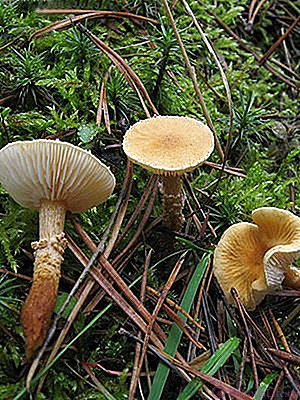

Amianthus cystoderm grows from early August to mid-October in temperate countries of the Northern Hemisphere.
Where can you find it: usually in coniferous forests, less often in mixed plantings or with ferns, in glades or parks.
Eating: not consumed, as it has an extremely low taste and an unpleasant odor.
Application in traditional medicine (data have not been confirmed and have not undergone clinical studies!): As a means for the treatment and prevention of gastritis.
Cystoderma odorous (Cystoderma carcharias)

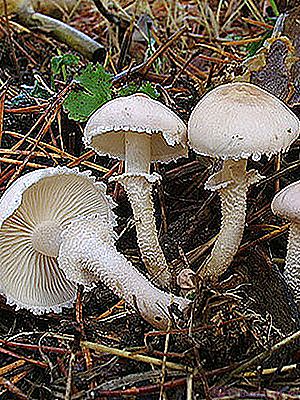
Hat (diameter 3-8 cm): usually gray, dirty yellow or pinkish, with a large central tubercle and fringed edges, which are usually much lighter than the center. In young mushrooms, it looks like a ball or cone, in others it is more open. Dry to the touch.
Leg (height 3-11 cm): very smooth, white, tapering from bottom to top, cylindrical, with a gray or pinkish central ring.
Plates: adhere tightly to the stem. White mushrooms in young mushrooms, darken with age.
Flesh: very fragile, white or pinkish in color.
The name cystoderm comes from the Greek "sharp", "rough" or "jagged".
Twin: related species of small cystoderms, however, they tend to be more yellow.
When it grows: from mid-August to early November in temperate countries of Eurasia and North America.
Where to find it: Amianthus cystoderm is found in coniferous forests with chalky soils, usually in moss next to pine trees.
Eating: practically not consumed due to little knowledge.
Application in traditional medicine: not applicable.
Other names: scaly cystoderm, fragrant umbrella.
Scaly cystoderm (Scaly umbrella): photo and description
| Name: | Scaly cystoderm |
| Latin name: | Cystoderma carcharias |
| Type of: | Conditionally edible |
| Synonyms: | Odorous cystoderm, Scaly umbrella, Shark cystoderm |
| Specifications: |
|
| Systematics: |
|
Scaly cystoderm is a lamellar edible mushroom from the Champignon family. Due to its similarity to toadstools, almost no one collects it. However, it is useful to know this rare mushroom, and if there are few others, then such a specimen can be replenished with a basket.
What does the scaly cystoderm look like?
Fragrant cystoderm or scaly umbrella (these are other names for the mushroom) has a light pulp with a faint taste of wood. Consists of a cap and a leg. On the back of the cap, frequent plates of a cream or light brown color are visible. Propagated by white spores.
Description of the hat
The evolution of the scaly cystoderm cap is as follows: cone-shaped (hemispherical) in youth, it becomes curved outward with a middle tubercle in adulthood with a diameter of up to 6 cm.The color is yellowish or gray-pink, but fades to white over time. The dry, matte surface is covered with a white, fine-grained powder of ripening spores. A fringe in the form of hanging flakes is visible at the edges of the cap.
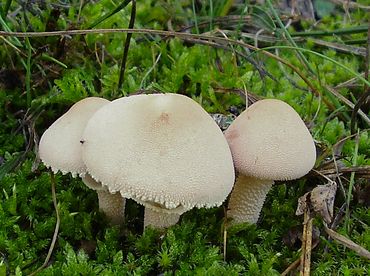
Leg description
The leg of the scaly cystoderm, hollow inside, has a height of 3-5 cm and a diameter of up to 5 mm. It is divided into two halves by a ring with a lapel: the upper one is light and smooth, the lower one is pimply.

Is the mushroom edible or not
Does not have high-quality taste characteristics. In terms of nutritional value, it belongs to the 4th category. It can be used for making soups and other dishes. It is recommended to boil for at least 15 minutes. The broth is drained.
Where and how it grows
Cystoderm grows on the ground in moss or on fallen leaves and needles in mixed pine and coniferous forests. Prefers chalky soils. Distributed mainly in North America, Central Asia, Europe. In Russia, it is a rare mushroom. There are single specimens and group shoots. The growing period is the second half of August and until November.
Doubles and their differences
There are several types of this family:
- Cystoderm amianthus. Conditionally edible. It has a more brown color, watery pulp. The leg has no ring.
- The cystoderm is red. It has a reddish or orange tint, a larger cap and a thick leg. Has a mushroom smell. Edible. It is necessary to boil.
Conclusion
The scaly cystoderm is an exotic mushroom. Therefore, it is better for novice mushroom pickers not to risk collecting them. Only an experienced lover of quiet hunting can be sure that he has taken the “right” specimen.
Amianthus cystoderm
Category: conditionally edible.
Hat (diameter 2-7 cm): red, brown or yellowish, with a central tubercle and often with remnants of a veil. In young mushrooms, it has the shape of a bell, over time it becomes almost flat or slightly convex, with wrinkles or small folds. The edges are usually curved towards the inside.
Leg (height 3-10 cm): very smooth, white, tapering from bottom to top, cylindrical. Usually without a bedspread ring.
Plates: adhere tightly to the stem.
In young mushrooms, they are white, with time they become creamy or light brown.
Flesh: very thin and fragile, usually pale yellow or white in color. Smells like mold when cut or broken.
Doubles: none.
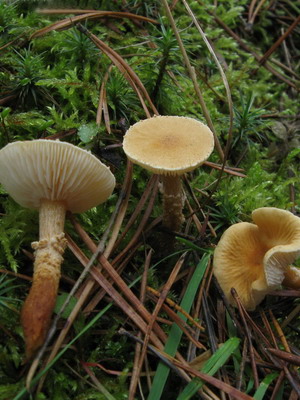
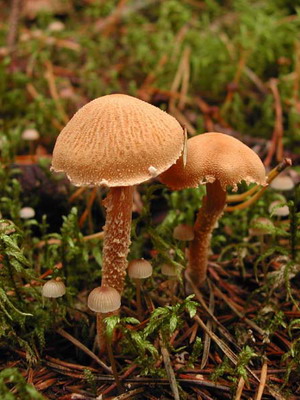
Amianthus cystoderm grows from early August to mid-October in temperate countries of the Northern Hemisphere.
Where can you find it: usually in coniferous forests, less often in mixed plantings or with ferns, in glades or parks.
Eating: not consumed, as it has an extremely low taste and an unpleasant odor.
Application in traditional medicine (data have not been confirmed and have not undergone clinical studies!): As a means for the treatment and prevention of gastritis.
Egg-shaped dung mushrooms
Gray dung beetle (Coprinus atramentarius).
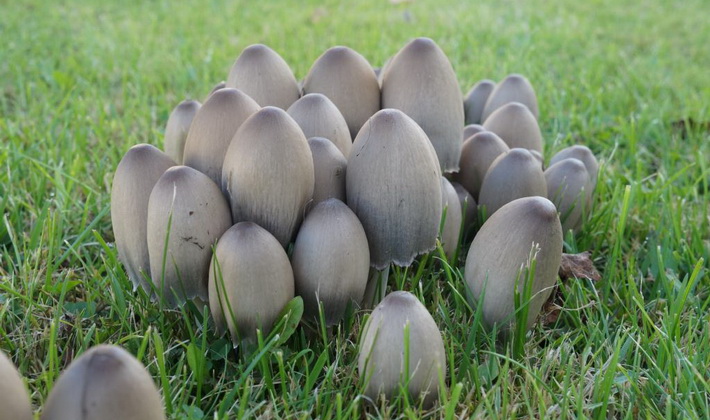
Family: Dung beetles (Coprinaceae).
Season: end of June - end of October.
Growth: in large groups.
Description:

The cap of a young mushroom is ovoid, then broadly bell-shaped.
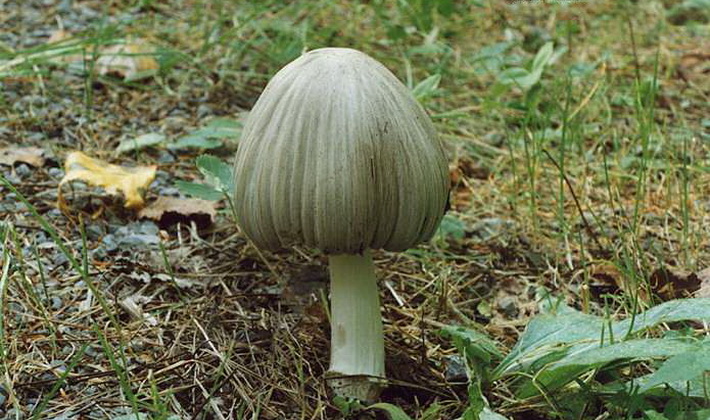
The pulp is light, quickly darkens, sweetish in taste. The surface of the cap is gray or grayish-brown, darker in the center, with small, darkish scales. The ring is white, quickly disappears. The edge of the cap is cracking.
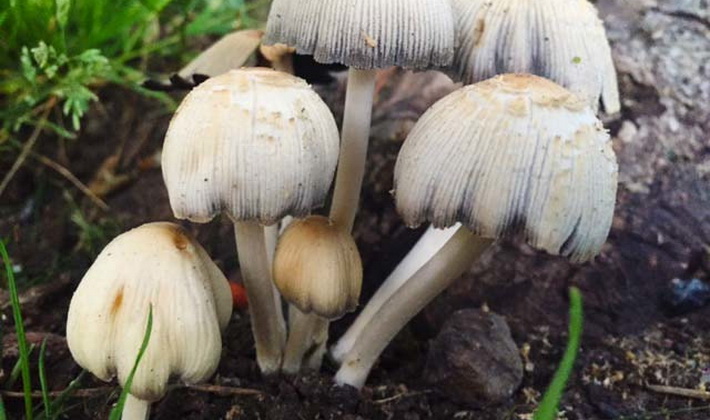
Stem white, slightly brownish at base, smooth, hollow, often strongly curved. Plates are loose, wide, frequent; in young mushrooms, they are white, turn black towards old age, then autolize (blur into a black liquid) along with the cap.
Conditionally edible mushroom. It is edible only at a young age after preliminary boiling. Drinking with alcoholic beverages causes poisoning.
Ecology and distribution:
It grows on humus-rich soils, in fields, vegetable gardens, dumps, near manure and compost heaps, in the forest in clearings, near trunks and stumps of deciduous trees.
White dung beetle (Coprinus comatus).
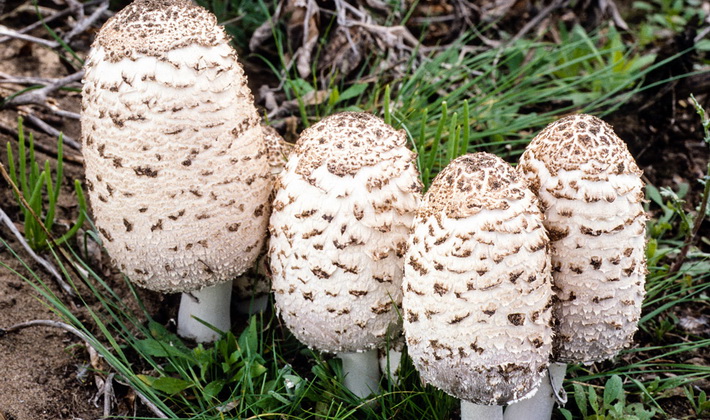
Family: Dung beetles (Coprinaceae).
Season: mid-August - mid-October.
Growth: in large groups.
Description:
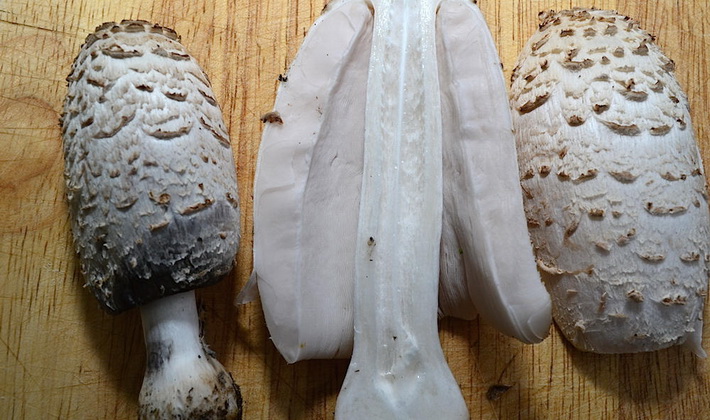
The flesh is white, soft, with a brown tubercle on the top of the cap.
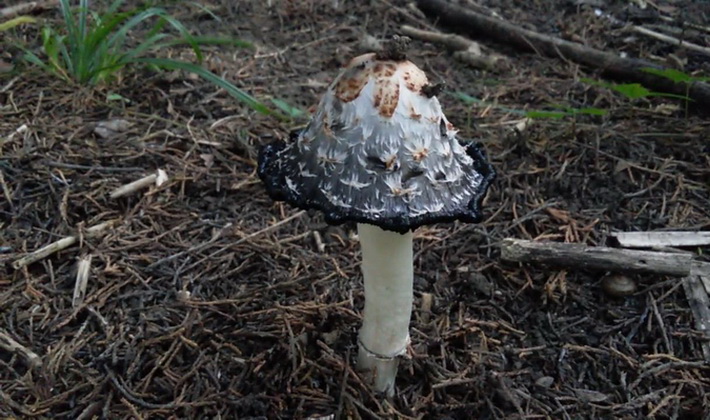
The stem is white, with a silky sheen, hollow. In old mushrooms, the plates and cap are autolyzed.
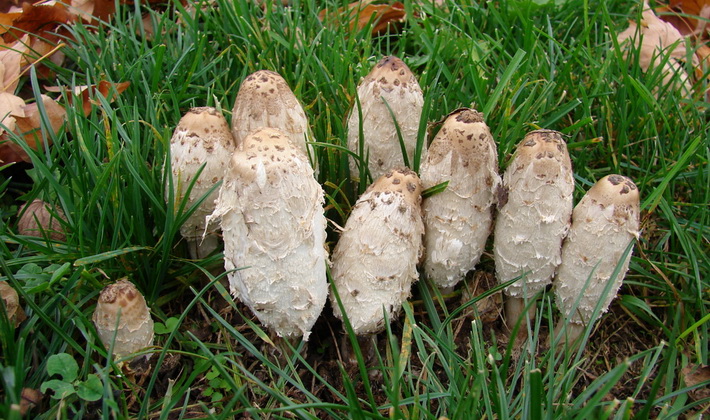
The cap of a young mushroom is elongate ovate, then narrowly bell-shaped, whitish or brownish, covered with fibrous scales. With age, the plates begin to turn pink below. The plates are loose, wide, frequent, white.
Ecology and distribution:
It grows on loose soils rich in organic fertilizers, in pastures, vegetable gardens, orchards and parks.
Flickering dung (Coprinus micaceus).

Family: Dung beetles (Coprinaceae).
Season: end of May - end of October.
Growth: in groups or aggregates.
Description:
The skin is yellow-brown, in young mushrooms it is covered with very small granular scales, formed from a thin common. The plates are thin, frequent, wide, adherent; the color is whitish at first, then they turn black and blur.
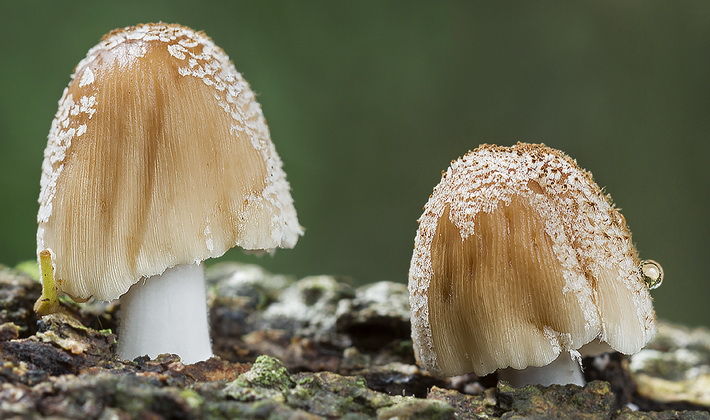
The pulp at a young age is white, sourish in taste.
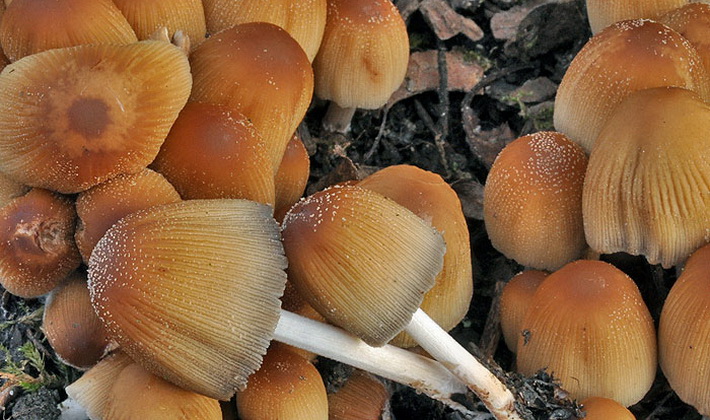
The leg is whitish, hollow, fragile; its surface is smooth or slightly silky. The edge of the cap is sometimes torn.

The cap is bell-shaped or ovoid with a grooved surface.
Conditionally edible mushroom. Usually not harvested due to the small size and rapid autolysis of the caps. Used fresh.
Ecology and distribution:
It grows both in forests, on the wood of deciduous trees, and in city parks, courtyards, on stumps or on the roots of old and damaged trees.
Egg-like dung mushrooms are shown in these photos:
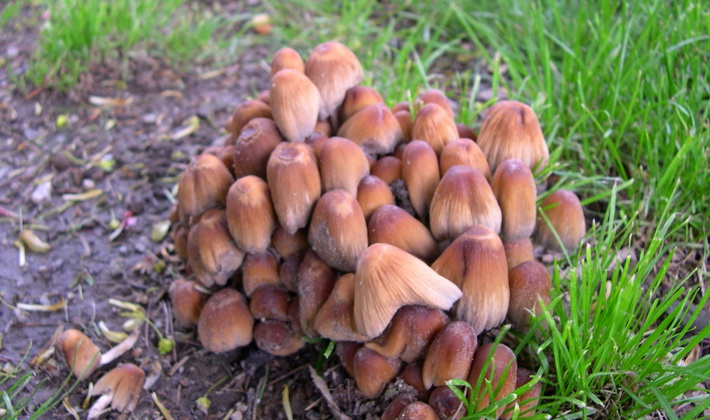
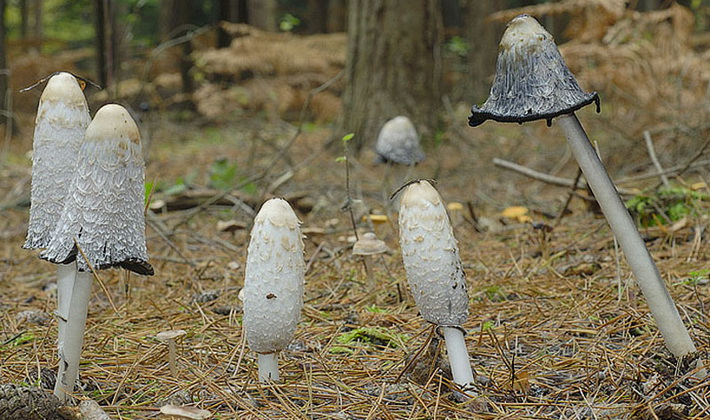
What does the scaly cystoderm look like?
Fragrant cystoderm or scaly umbrella (these are other names for the mushroom) has a light pulp with a faint taste of wood. Consists of a cap and a leg. On the back of the cap, frequent plates of a cream or light brown color are visible. Propagated by white spores.
Description of the hat
The evolution of the scaly cystoderm cap is as follows: cone-shaped (hemispherical) in youth, it becomes curved outward with a middle tubercle in adulthood with a diameter of up to 6 cm.The color is yellowish or gray-pink, but eventually fades to white. The dry, matte surface is covered with a white, fine-grained powder of ripening spores. A fringe in the form of hanging flakes is visible at the edges of the cap.
Leg description
The leg of the scaly cystoderm, hollow inside, has a height of 3-5 cm and a diameter of up to 5 mm. It is divided into two halves by a ring with a lapel: the upper one is light and smooth, the lower one is pimply.
Description of cystoderm red
The diameter of the red umbrella hat is small - 5-8 centimeters. Its shape is convex, and the edges are wrapped, over time, the umbrella opens and becomes convex-outstretched, while the edges are lowered. The color of the cap is orange-red, sometimes the center is darker. White flakes run along the edge of the cap.

The plates are thin, often located, poorly adherent. Their color is light - whitish, and eventually becomes cream. Spore white powder. The flesh of this umbrella is thin, whitish in color, with a mushroom smell.
The length of the leg ranges from 3 to 5 centimeters, and the diameter is approximately 0.5-1 centimeters. The shape of the leg looks like a cylinder, its base is thickened. The stem is fibrous, hollow. There is a ring on the leg, above the ring it is smooth whitish or yellowish in color, and under the ring it is reddish, but lighter than the cap. The surface of the leg is scaly-granular. The ring is also granular, narrow, reddish in color, it often disappears with age.
Distribution places of red umbrellas
Red cystoderms bear fruit from July to October. They grow in coniferous forests, most often found in pine forests. Also common in forests mixed with pine. They are rare. They grow singly or in groups.

Taste qualities of red cystoderm
Umbrella red is a little known mushroom, but it is definitely edible. These mushrooms are eaten freshly prepared.
Other mushrooms of this genus
Amianthus cystoderm or amianthus umbrella is a conditionally edible mushroom. The diameter of the cap of this small mushroom is 3-6 cm. A small tubercle is sometimes visible in the center of the cap, the edges are lowered. Over time, the convex shape of the cap changes to a convex-outstretched one.
Its surface is dry, fine-grained. The color of the cap is ocher brown or ocher yellow. The leg is 2-4 centimeters long and about 0.5 centimeters thick. There is a ring on the leg, the color above the ring is yellow, and in the lower part it is yellow-brown or ocher-yellow. The ring quickly disappears.

Amianthus umbrellas bear fruit from August to September. They grow in coniferous and mixed forests. You can find these mushrooms on the litter, in moss, in meadows, in parks. They are rare. They settle in groups.
Granular cystoderm is a conditionally edible mushroom. The diameter of the cap is 1-5 centimeters. At a young age, the shape of the cap is ovoid with a bent edge, its surface is covered with warts and flakes. In mature mushrooms, the shape of the cap changes to an extended one, and the surface becomes fine-grained, dry, and sometimes wrinkled. The color of the cap is ocher-brown or red-brown. The leg is cylindrical, dry, hollow, of the same color with a cap. Young mushrooms have a ring on the stem, but it quickly disappears.
These mushrooms are widespread in North America. They settle alone or in groups. They are found mainly in mixed forests. They grow in soil or moss. Granular cystoderms bear fruit from August to October.

Names and taxonomy
Scientific synonyms:
- Agaricus granulosus var. amianthinus (Scop.) Fr., 1838
- Armillaria amianthina (Scop.) Kauffm., 1923
- Lepiota amianthina (Scop.) P. Karst., 1879
- Lepiota granulosa var. amianthina (Scop.) P. Kumm., 1871
Other Russian names: spinous cystoderm, amiant umbrella.
The species was first described as Agaricus amianthinus in the city of the Italian-Austrian naturalist Giovanni Scopoli. The modern species name was proposed in the city by the Swiss mycologist Victor Fayod.
Generic name of the mushroom Cystoderma comes from the Greek κύστη (kysti), bubble, blister, and δέρμα (derma), leather; species epithet amianthinum - from αμίαντοσ (amiantos), spotless.
Subspecies and forms edit code
- Cystoderma amianthinum f. album (Maire) A.H. Sm. & Singer, 1945 - white-hat form, currently not recognized as a separate taxon;
- Cystoderma amianthinum f. olivaceum Singer, 1945 - distinguished by the olive coloration of the caps of young mushrooms; the form is found in Siberia;
- Cystoderma amianthinum f. rugosoreticulatum (F. Lorinser) A.H. Sm. & Singer, 1945 - a form with a radially wrinkled cap, found in France, sometimes isolated as a separate species Cystoderma rugosoreticulatum (F. Lorinser) Wasser, 1978;
- Cystoderma var. longisporum (Kühner) Locq., 1945 and Cystoderma var. sublongisporum Singer, 1945, are currently isolated as a separate species Cystoderma jasonis (Cooke & Massee) Harmaja, 1978.
Notes (edit)
- According to the website Mycobank.org
- Vyacheslav Stepanov. Cystoderma amianthinum(unspecified) ... Mushrooms of the Kaluga region. Date of treatment June 20, 2011.
- Fayod, M.V. Prodrome d'une histoire naturelle des Agaricinés // Annales des Sciences Naturelles, Botanique. - Paris, 1889. - T. 9, no. Vii. - S. 350-351.
- ↑ 123Kuo, M. Cystoderma amianthinum(unspecified) ... Retrieved June 20, 2011. Archived August 12, 2012.
- ↑ 12Lesso, Thomas. Mushrooms. - Moscow: AST, Astrel, 2007 .-- P. 97 .-- 304 p.
- Amianthus cystoderm (unspecified) ... Mushrooms of the Leningrad Region. Date of treatment June 20, 2011.
- Amianthus cystoderm (unspecified) ... Mushrooms of the middle lane. Date of treatment June 20, 2011.
Cystoderm
Amianthus cystoderm
Hat (diameter 2-7 cm): red, brown or yellowish, with a central tubercle and often with remnants of a veil. In young mushrooms, it has the shape of a bell, over time it becomes almost flat or slightly convex, with wrinkles or small folds. The edges are usually curved towards the inside.
Leg (height 3-10 cm): very smooth, white, tapering from bottom to top, cylindrical. Usually without a bedspread ring.
Plates: adhere tightly to the stem.
In young mushrooms, they are white, with time they become creamy or light brown.
Flesh: very thin and fragile, usually pale yellow or white in color. Smells like mold when cut or broken.
Doubles: none.
Amianthus cystoderm grows from early August to mid-October in temperate countries of the Northern Hemisphere.
Where can you find it: usually in coniferous forests, less often in mixed plantings or with ferns, in glades or parks.
Eating: not consumed, as it has an extremely low taste and an unpleasant odor.
Application in traditional medicine (data have not been confirmed and have not undergone clinical studies!): As a means for the treatment and prevention of gastritis.
Cystoderma odorous (Cystoderma carcharias)
Hat (diameter 3-8 cm): usually gray, dirty yellow or pinkish, with a large central tubercle and fringed edges, which are usually much lighter than the center. In young mushrooms, it looks like a ball or cone, in others it is more open. Dry to the touch.
Leg (height 3-11 cm): very smooth, white, tapering from bottom to top, cylindrical, with a gray or pinkish central ring.
Plates: adhere tightly to the stem. White mushrooms in young mushrooms, darken with age.
Flesh: very fragile, white or pinkish in color.
The name cystoderm comes from the Greek "sharp", "rough" or "jagged".
Twin: related species of small cystoderms, however, they tend to be more yellow.
When it grows: from mid-August to early November in temperate countries of Eurasia and North America.
Where to find it: Amianthus cystoderm is found in coniferous forests with chalky soils, usually in moss next to pine trees.
Eating: practically not consumed due to little knowledge.
Application in traditional medicine: not applicable.
Other names: scaly cystoderm, fragrant umbrella.

